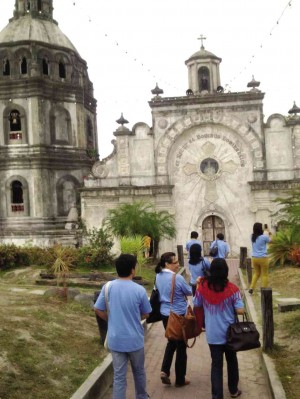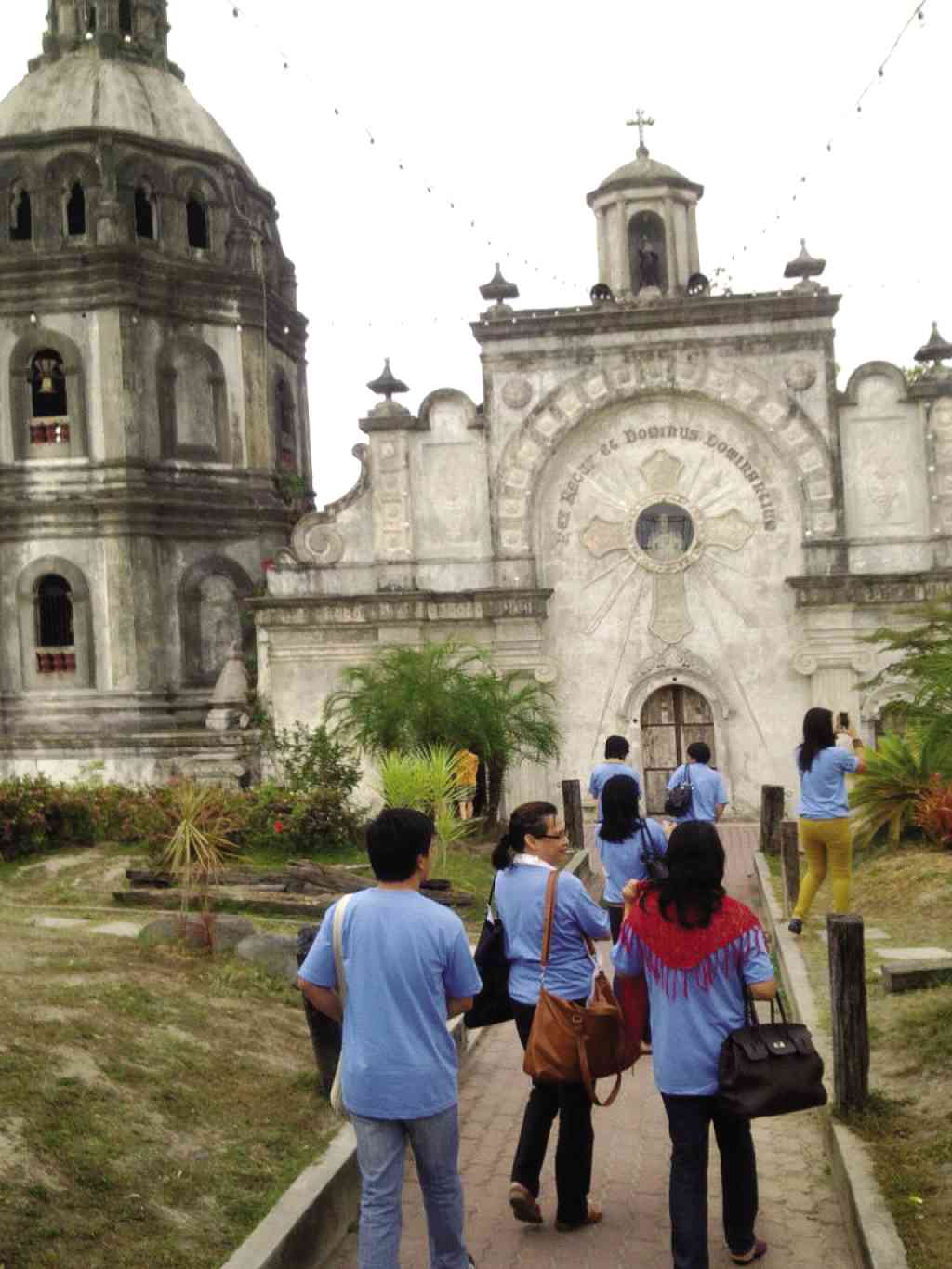
Mindanao—in particular, Zamboanga City—was the venue chosen in June 2013 by National Commission for Culture and the Arts for the 2014 Writers’ Festival. Recent disturbances (Read: Zamboanga siege) forced a relocation of the annual literary festival for the National Arts Month to Subic, Zambales.
Nonetheless, recent calamities—both natural and manmade—wove a common thread in the festival’s events and discussions, from the keynote speech to the plenary talks, panel discussions, cultural tour in Subic and neighboring Pampanga.
“Taboan,” the Visayan word referring to “marketplace,” is the the flagship project of the NCCA National Committee on Literary Arts for the National Arts Month. Now on its sixth year, Taboan is among the few literary events with extensive participation of writers coming from the regions.
This year, with the Philippine Arts Festival’s (PAF) overall theme of “Filipino Arts on the Edge,” Taboan’s conference on “Winds and Waves, Wars and Words,” held last month at the Subic Holiday Villas, had a most varied mix of participant writers and artists: from anthropologist/essayist Michael Tan, then just a few days away from being appointed UP Diliman Chancellor, to Tausug musician Manz Hapil, who lived in Rio Hondo in Zamboanga City before the September 2013 siege.
Apart from the usual group of University-based writers, delegates included a municipal trial court judge, a Higaonon farmer-novelist who has been twice a recipient of NCCA’s Writer’s Prize, a city councilor-cum-film professor, a medical doctor writing Kapampangan poetry, a former priest and a shipping executive whose father, also in the audience, was a former rebel. Also participating as guest panelist was Ekaterina Baklanova, senior researcher on Philippine Studies at the Lomonosov Moscow State University in Russia.
Tan’s keynote address (see also his Philippine Daily Inquirer column, Feb. 26 and 28) on the “power of words in dealing with winds, waves and wars” exhorted writers to use words in order to reconfigure winds, waves and wars, and to restore or retrieve words and literary devices to build and sustain peace, as well as to heal the wounds of disasters and wars.
Tan adverted to Filipino words and practices, revealing ways of dealing with adversity, which writers might think about, as they attempt to “find words to bring back memories, to shake us out of apathy, to wage war against the many injustices that conspire with winds, waves and wars to bring more suffering.”
‘Literature of Disaster’
In the second plenary session, Panitikan sa Panahon ng Delubyo: The Literature of Disaster, National Artist Bien Lumbera discussed several works of fiction, notably Gilda Cordero Fernando’s “People in the War.” Being a narrative of the horrors of war, and the humane-ness of its actors (mainly, the victims of war) despite war’s dehumanizing conditions, the story illustrates how literature can deepen one’s understanding or “appreciation” of the experience of war.
National Artist Virgiio Almario, for his part, cautioned writers about yielding to intellectual movements foreign to Filipino culture, instead of using literary forms, materials and perspectives of native origin, to deal with contemporary issues such as environmental degradation.
Literary scholar Epifanio San Juan Jr., on the other hand, posed the question about medium, in view of the digitization of most forms of commerce and communication. San Juan suggested, possibly in jest, that writers might consider, instead of writing, making films or artwork of a similar nature.
The panel discussions for the most part, adhered to the theme of crisis, adversity and devastation, and writers’ responses to these. Vim Nadera spoke of personal devastation and the use of literature as therapy, and Fr. Albert Alejo talked about art, music and literature as ways to comfort and heal, particularly in Mindanao.
Delegates from Tacloban recounted their experience during the November 2013 typhoon, and the musician Hapil sang a Tausug composition, after he spoke briefly about being in Rio Hondo during the September siege in Zamboanga City.
Rebekah Alawi, literature professor and writer from MSU Marawi, argued that writers, through their work and their lives, must use literature to enlighten and clarify. She related how, years ago, her family gave shelter to leftist insurgents, because it was the human thing to do.
Writer’s’ Prize
The Writer’s Prize, given every other year by NCCA, is the single biggest award given to writers for literary projects in selected regional languages.
Taboan 2014 hosted the awarding of the 6th (2013) Writers Prize, to the following winners: Ariel Tabag (Iluko novel), Joselito de los Reyes (Filipino Short Story), Hope Yu (Cebuano essay), Rafael Banzuela Jr. (Bikol poetry), Jeremy Evardone (Waray Drama).
NCCA chair Felipe de Leon Jr. awarded the prizes to Alawi, Francis Macansantos, Eugene Evasco, Janis Salvacion and Telesforo Sungkit Jr.
Sungkit, twice awarded (in 2007 and 2011) for novels in Cebuano, later graced UST Press’ launch of his book entitled “Driftwood on Dry Land,” a translation of his Cebuano novel “Mga Gapnod sa Kamad-an,” awarded the 2007 Writers Prize.
Lumbera, in his brief address, exhorted writers in attendance, particularly those from the regions, to write the literary history of their regions.
Almario chided De Leon to consider increasing the monetary award, and to revive the Layaw Writers’ residency.
On the second night, a play was staged by the Olongapo City Arts and Culture Council. Apart from invited Taboan writer delegates, students and teachers from Olongapo City and nearby municipalities attended and actively participated in plenary and panel discussions.
Taboan in the regions
To bring NCCA and PAF to the regions through literary arts activities, 10 Taboan satellite projects were scheduled for the months of February and March in various regions of the country—from Ilocos in the north to Davao City in the south, including NCR. Poetry readings, literature teaching conferences, seminar-workshops, fliptop showdowns were held at various venues.
In Tacloban, writers partnered with the Leyte-Samar Heritage Society to intersperse poetry performances and exhibits with traditional rituals.
In Baguio, literary readings and performances dubbed “Panagbenga readings” (after the city’s flower festival) were held at UP Baguio and the Baguio City National High School. Students from the Special Program for the Arts read and performed their own creative work, some written in Iluko, and translated into Filipino or English. The work of these young Cordillera writers writing on various subjects, will soon be published in the school’s literary publication, “Saleng” (Pine Tree).









































